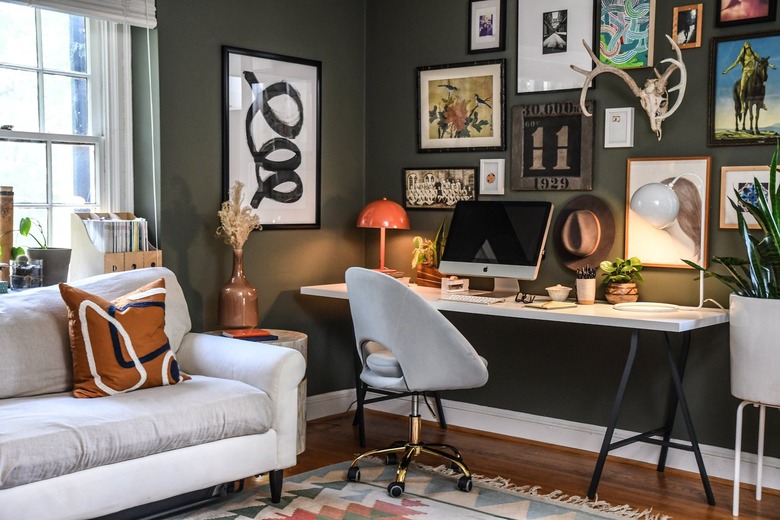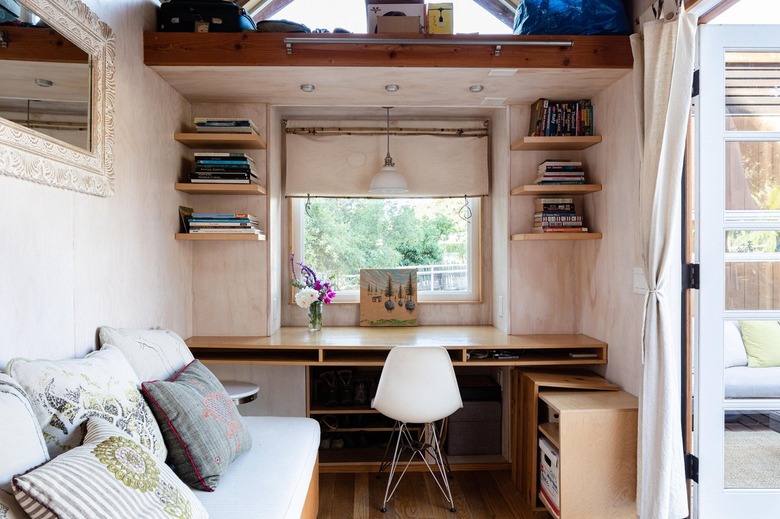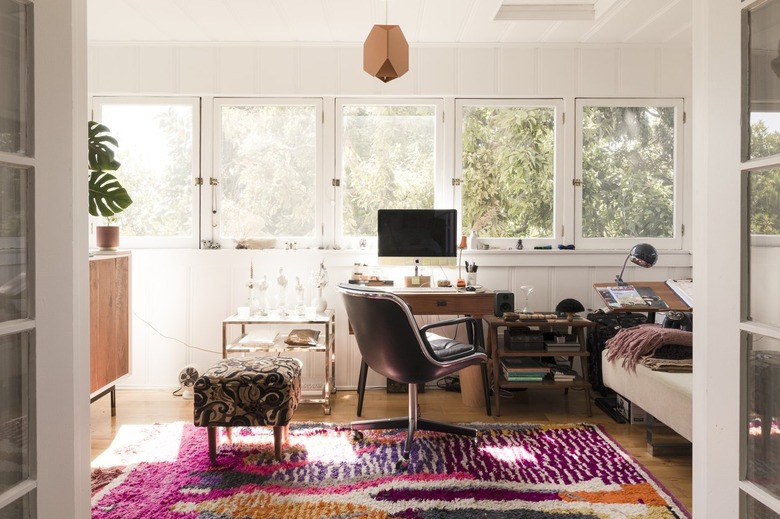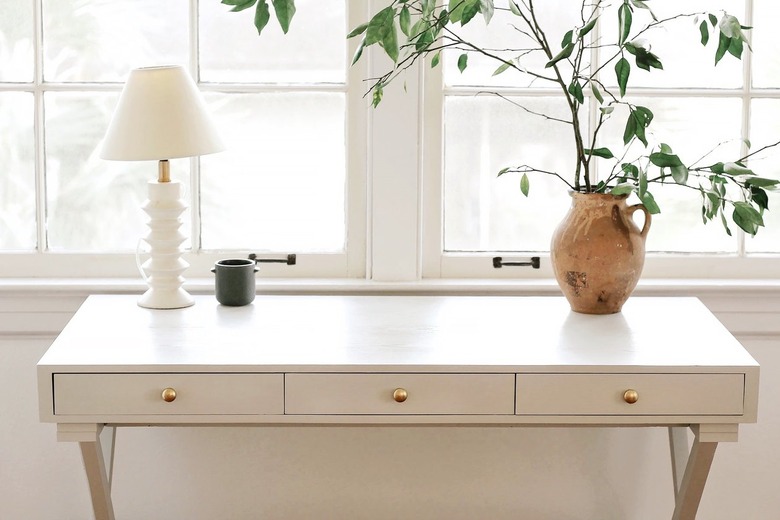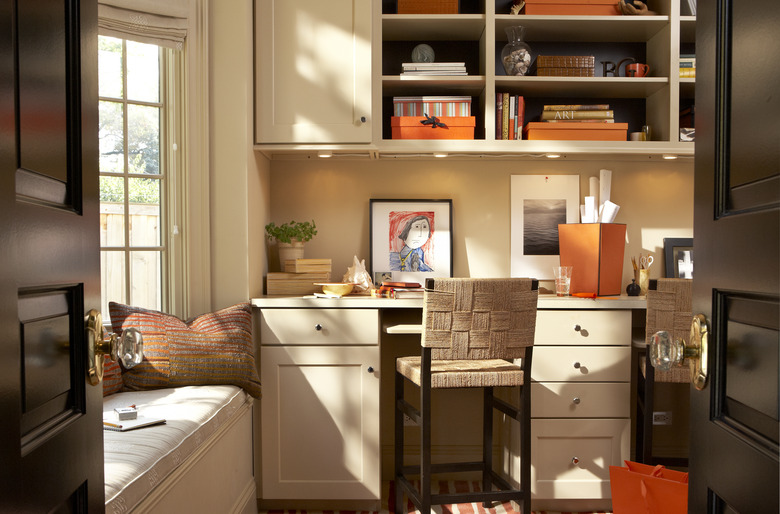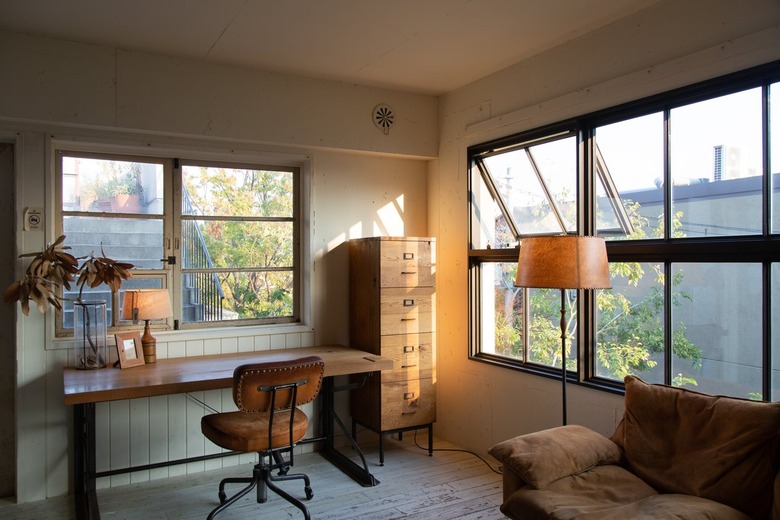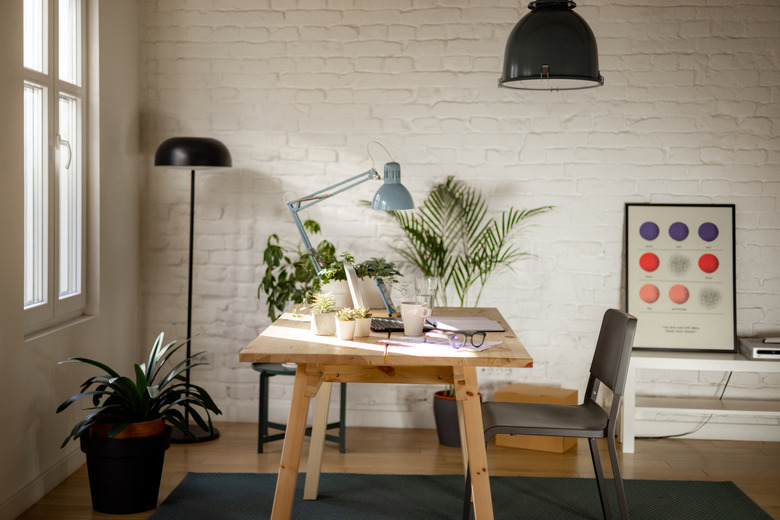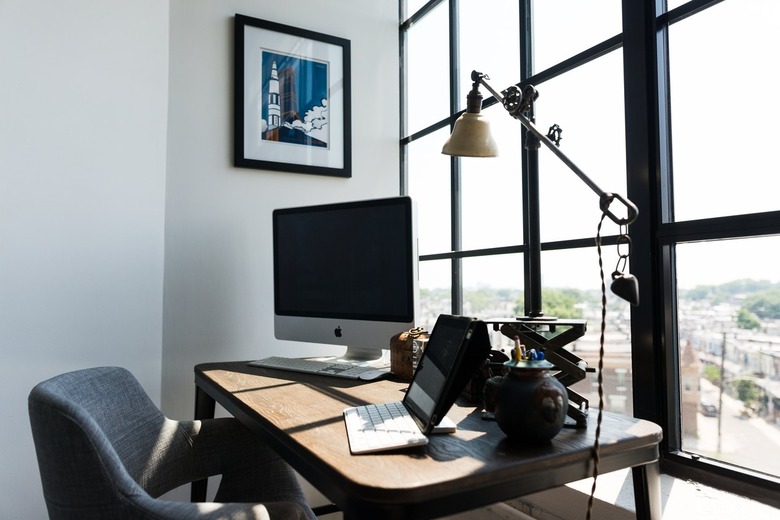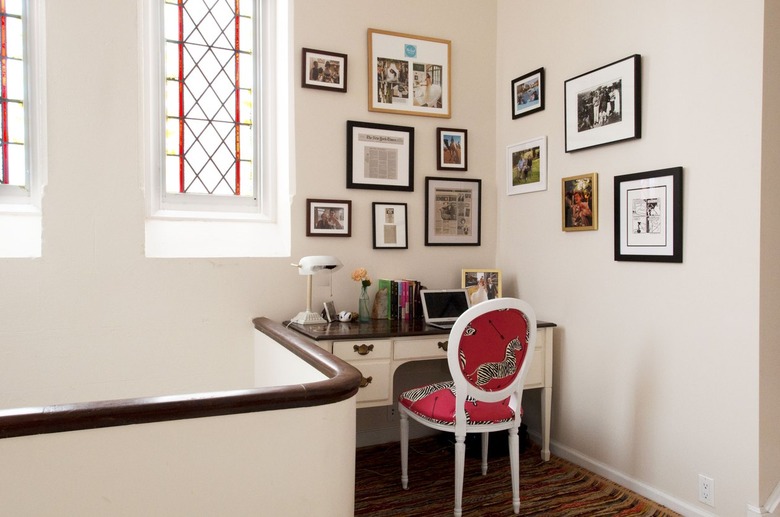5 Tips For Optimizing Your Home Office Lighting
We may receive a commission on purchases made from links.
Until your dream of retiring early comes true, you need a functional office space to grind out the duties of your job. Optimal home office lighting is an important consideration, whether you need to upgrade your existing home office or you're creating one from scratch. Layering light sources using the right types of fixtures helps you make your workday more productive.
Looking to optimize your home office lighting? Here are five illuminating tips:
1. Layer Different Types of Lighting
1. Layer Different Types of Lighting
A layered approach helps you create pockets of light where you need them with good overall lighting. In other words: A single type of light doesn't work for every activity in a home office. You want your home office lighting fixtures to fit into your workstation seamlessly, especially if your office is in an open space like your living room. But more important is how well the fixture works as a light source for your desk and other workspaces.
Here are the different types of lighting that should be present in your home office:
Ambient Lighting
Ambient light is your general lighting that brightens the room overall. It supplements natural light on dark days or when you're working into the evening hours. You should generally aim for 20 lumens per square foot when creating your ambient lighting. Relying only on ambient lighting can create harsh light with glare, which isn't ideal in office settings.
Ceiling lights typically provide ambient lighting and can be flush-mount fixtures, chandeliers, or pendant lighting. A floor lamp can also provide general lighting. Some floor lamps include fewer bulbs that direct the light downward, which can work as task lighting when directed toward your desk.
Task Lighting
Task lighting includes all of the focused lighting that shines directly on your workspace. It's designed to light an area to help you do a specific task, rather than lighting the entire room. Your task lighting should be brighter than your ambient lighting. A general guide is to multiply the task area square footage by 50 to determine the lumens needed.
For example, to provide task lighting for a desk that measures 2 feet by 4 feet:
- 2 x 4 = 8 square feet
- 8 x 50 = 400 lumens
In a home office, task lighting is usually achieved with a desk lamp. However, you can also use a table lamp near your desk or a series of pendant light fixtures that hang close to your desktop. Just make sure your body doesn't come between the light and your work, or you'll be working in shadow.
Accent Lighting
Accent lighting can finish off your office space by highlighting certain features and adding to the overall glow. It should typically be about three times brighter than your office's ambient lighting. Examples of good accent lighting would be undercabinet lighting under a cabinet over your desk or LED strip lighting along bookshelves. If you have artwork on your office walls, a picture light hanging above it serves as accent lighting.
2. Amplify Natural Light
2. Amplify Natural Light
Natural light provides quality office lighting without any electricity, so take advantage of windows, skylights, and doors with glass panels in your office space. Called daylighting, using natural sunlight reduces your reliance on artificial lighting.
To get the most natural light in your office, try:
- Positioning your desk to maximize the natural light that hits it
- Moving other large furniture out of the way of the sunlight
- Getting rid of window coverings or installing new window coverings that open completely without blocking large portions of the windows
- Installing additional windows or skylights
- Painting the office walls a lighter or more reflective color
- Installing mirrors to reflect the natural light
- Adding other reflective surfaces to your office decor, such as metallic accents or glossy wood finishes
Tip
North-facing windows can provide ideal office lighting because they don't cause much glare and the light is even. Windows on the east and west sides of your home often create glare, so you might need to play with the placement of your home office desk to reduce glare. Light-filtering curtains or blinds can cut down on the glare during times when sunlight is shining directly into the window.
3. Choose the Right Bulbs
3. Choose the Right Bulbs
LED lights are ideal for a home office space because you can choose the color temperature and as a bonus they're energy-efficient. The color temperature of light relates to its brightness and perceived warmth. It is measured in degrees Kelvin (K). Bulbs with lower Kelvin ratings — usually around 2200K to 2700K — produce warm light that's better for ambient lighting.
For home office task lighting, bright white light between 4000K and 4500K is ideal. This more closely replicates natural daylight and provides crisp light that lets you see clearly and even helps to keep you alert. Warmer colors with slightly lower Kelvin ratings can be better for reading printed material or in a room with lots of natural light. Using tunable LED bulbs allows you to change the color temperature based on activities or the time of day to get the type of light that feels best for the activity.
4. Place Fixtures Correctly
4. Place Fixtures Correctly
Overhead light fixtures typically go near the center of the room, so you don't have much control over the placement, unless you add new overhead fixtures. You can adjust your desk placement, though. An ideal position is to have the overhead light slightly in front of your desk so it doesn't create glare on your computer screen and to avoid shadows from your head.
For desk lamps, choose a spot where they light up your work surface without shining directly on your computer screen to avoid glare. The placement should also avoid shadows — if you're right-handed, placing the lamp on your left prevents your hand from casting a shadow over your work. Avoid placing it where things like your computer screen will create shadows as well. Aim to have the bottom of the desk lamp shade about 15 inches above your desk surface.
5. Allow for Adjustments
5. Allow for Adjustments
Being able to adjust the brightness and positioning of your home office lighting lets you change it for different situations. Desk lighting that swivels or raises and lowers allows you to position the light so it shines in the appropriate place.
Dimmable lighting is also beneficial in a home office. You can use the dimmer switch to reduce or increase the brightness during various activities. For example, when you're working on your computer, you might want dimmer light to reduce glare. When you're reading paperwork or books, you might want brighter light to see the print clearly.
Importance of Home Office Lighting
Importance of Home Office Lighting
You take in lots of information during your workday, from reading printed reports to seeing what you're typing on your computer screen. Some jobs also involve manual tasks, such as sketching plans, putting together products, or packaging orders. Adequate lighting makes it easier to complete all tasks you do during your workday, making you more productive.
The right kind of home office lighting also keeps you comfortable. Glare, shadows, and dim lighting can cause eye strain and headaches that leave you feeling uncomfortable. This can decrease your productivity. While home offices are generally safe, bright lighting can prevent minor incidents, such as tripping over a computer cord or product packaging on the floor.
Ideal Home Office Lighting
Ideal Home Office Lighting
If you've ever worked in an office with flickering, buzzing fluorescent light fixtures overhead, you know what you don't want for home office lighting. The right lighting for your home office includes a mix of overhead lighting, task lighting, and accent lighting. It needs to be bright enough to see your computer screen and printed pages clearly without being so bright that it creates glare or hurts your eyes. You also want to avoid shadows on your work surface with even lighting.
